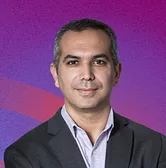Home » physical security
Articles Tagged with ''physical security''
Security guarding in the future: Robocop meets sensor integration
Organizations will look to technology to help augment the jobs of security officers, while boosting efficiency, safety and security.
September 26, 2022
Why cybersecurity should be your physical security priority
And how to apply this knowledge to your enterprise at scale
September 9, 2022
Sign-up to receive top management & result-driven techniques in the industry.
Join over 20,000+ industry leaders who receive our premium content.
SIGN UP TODAY!Copyright ©2025. All Rights Reserved BNP Media.
Design, CMS, Hosting & Web Development :: ePublishing












